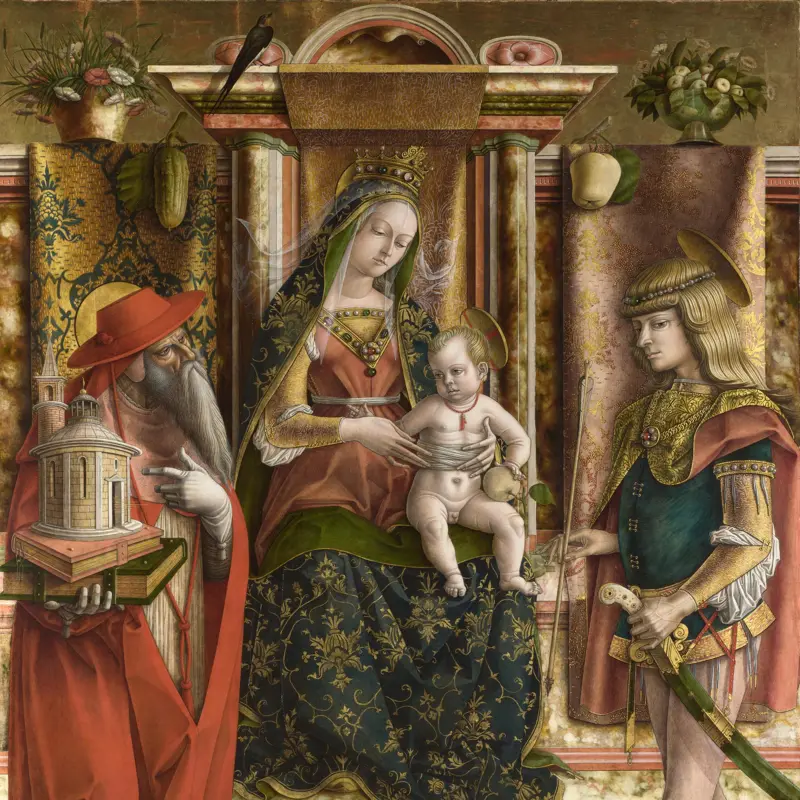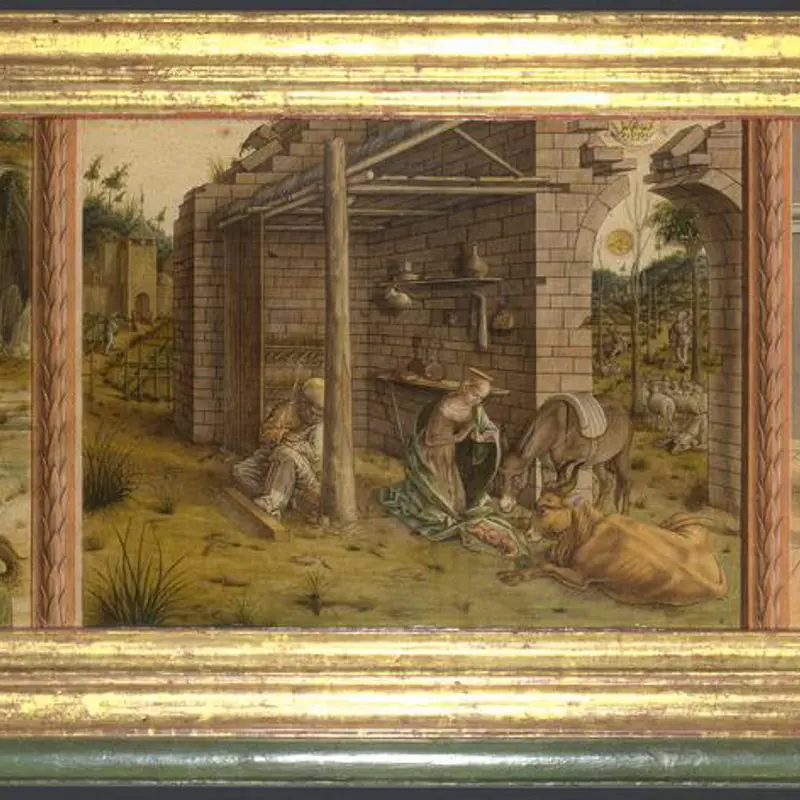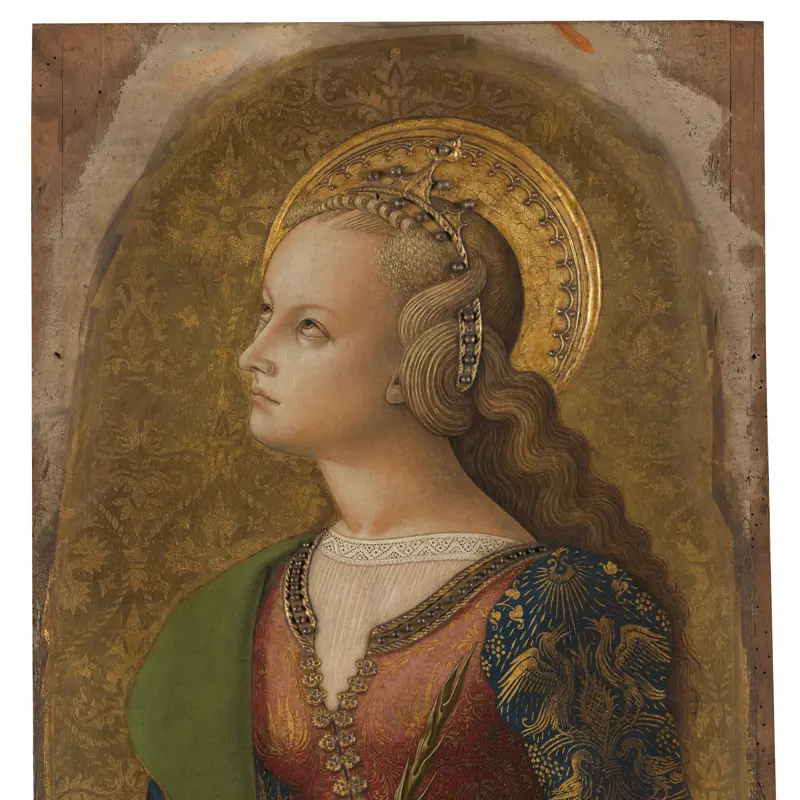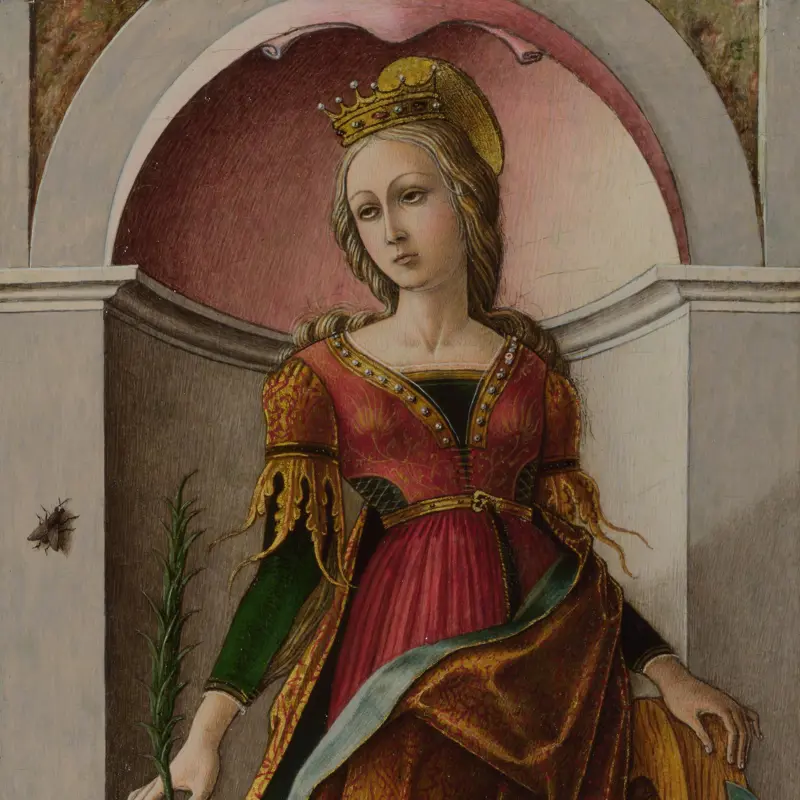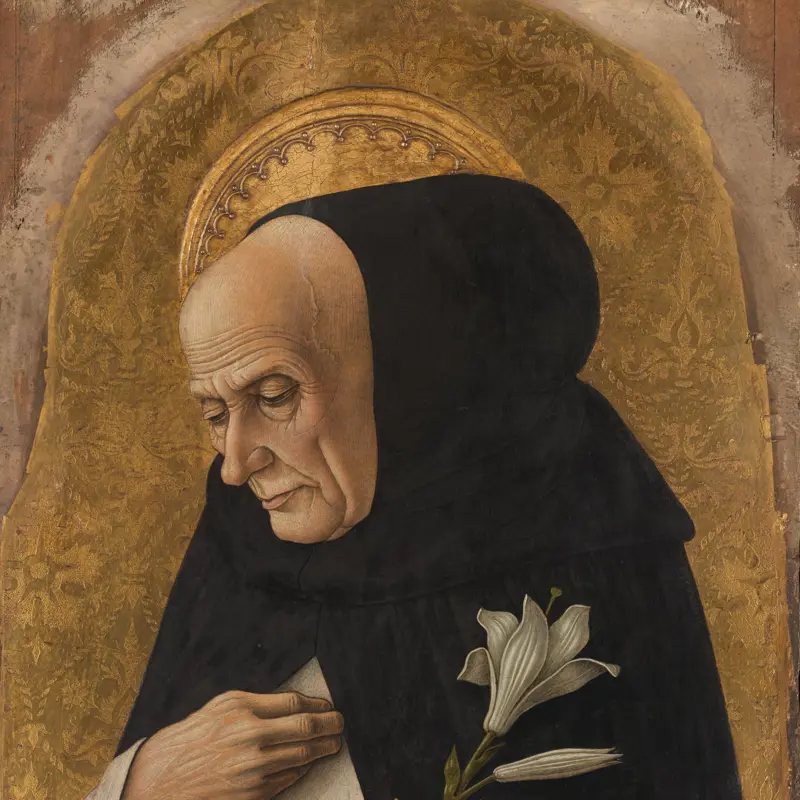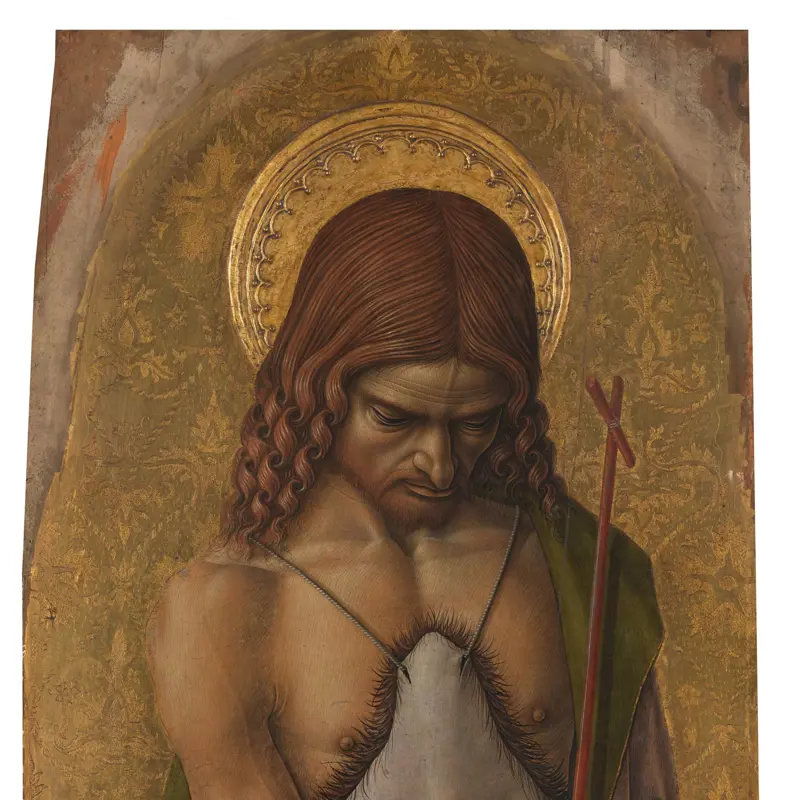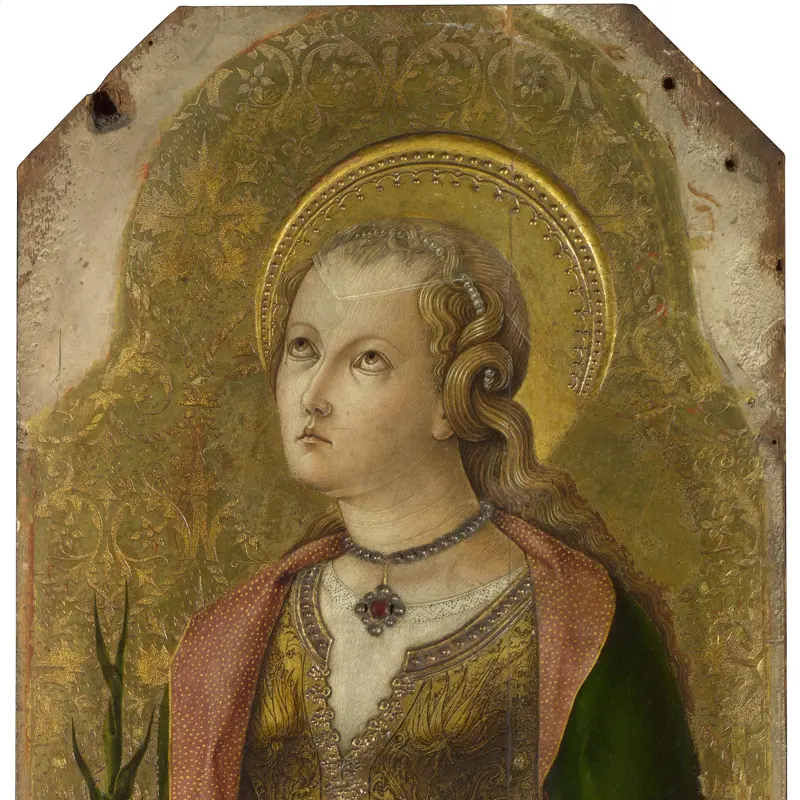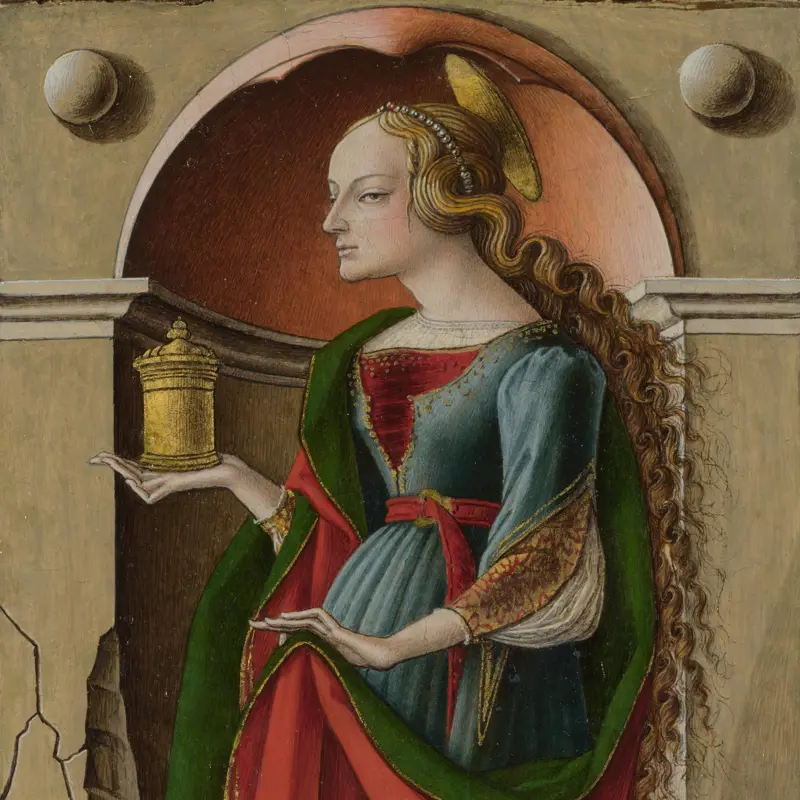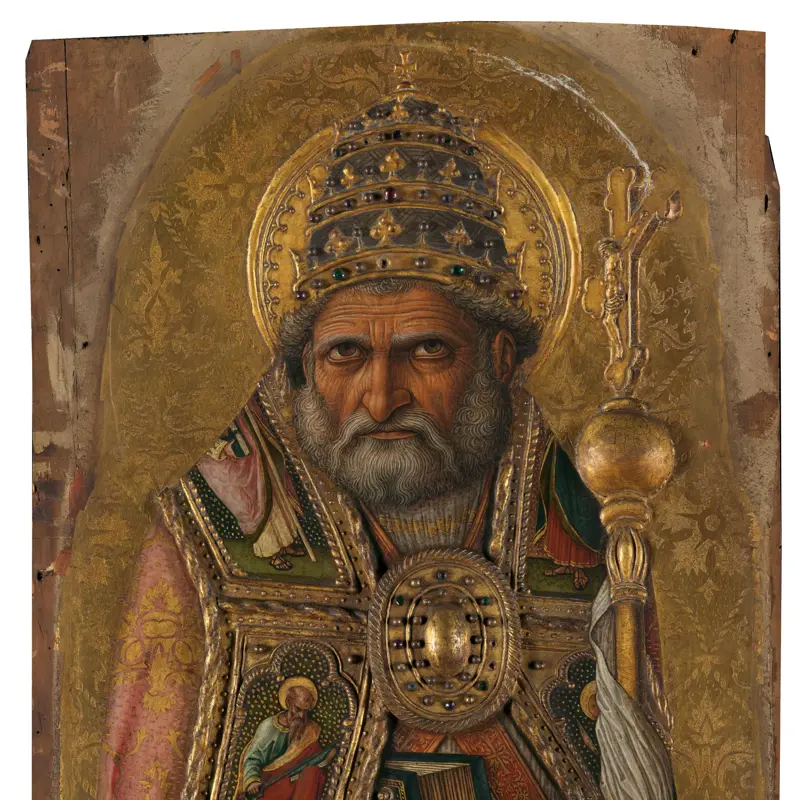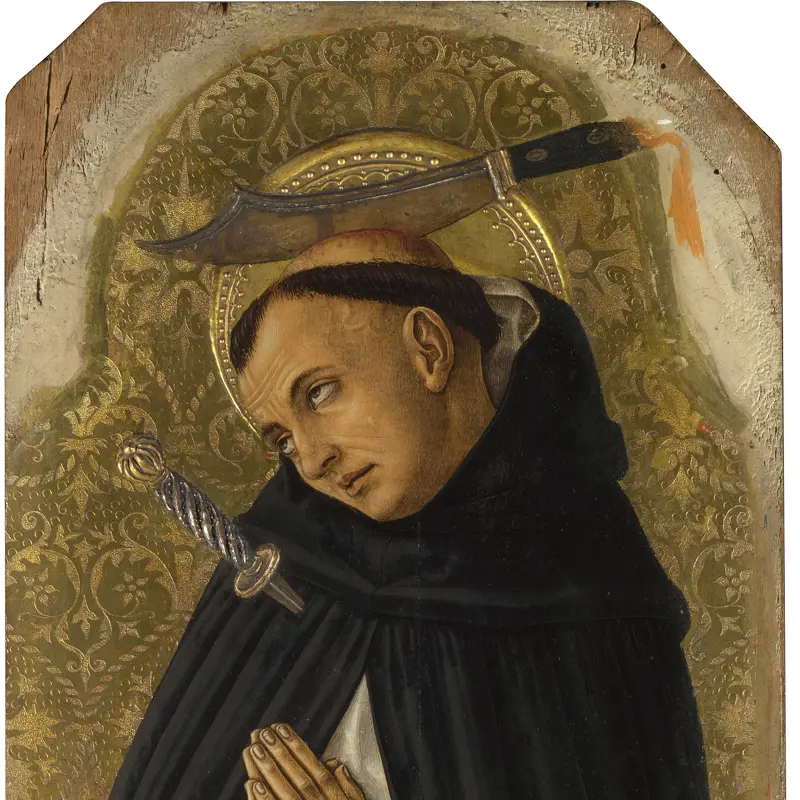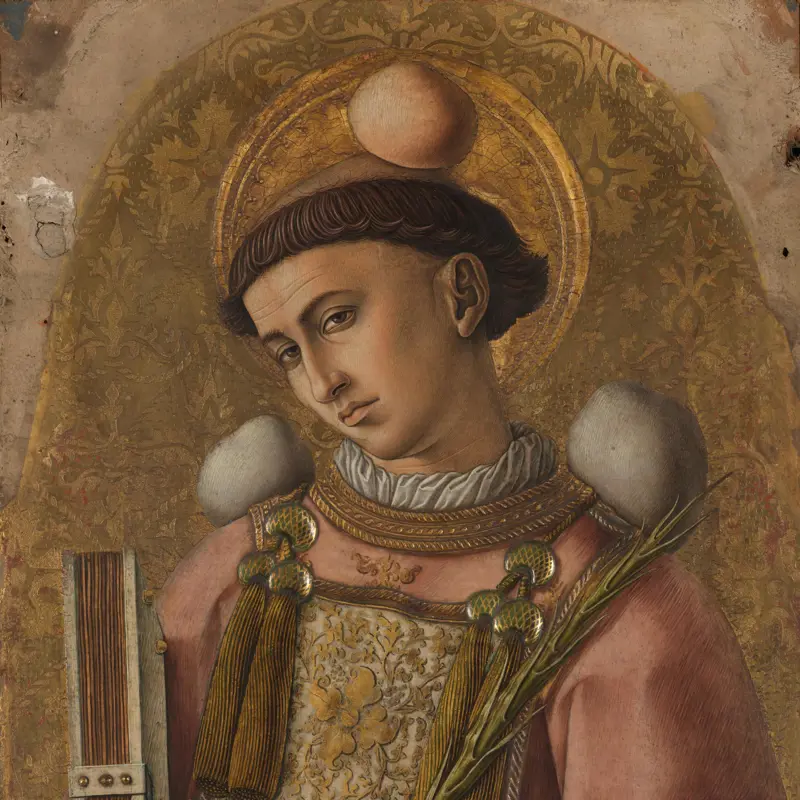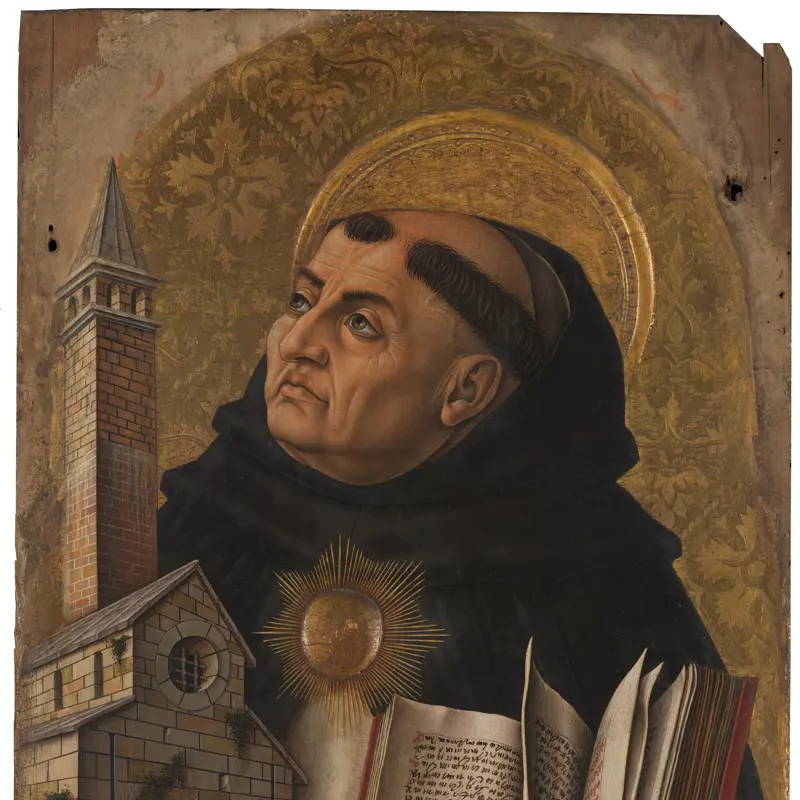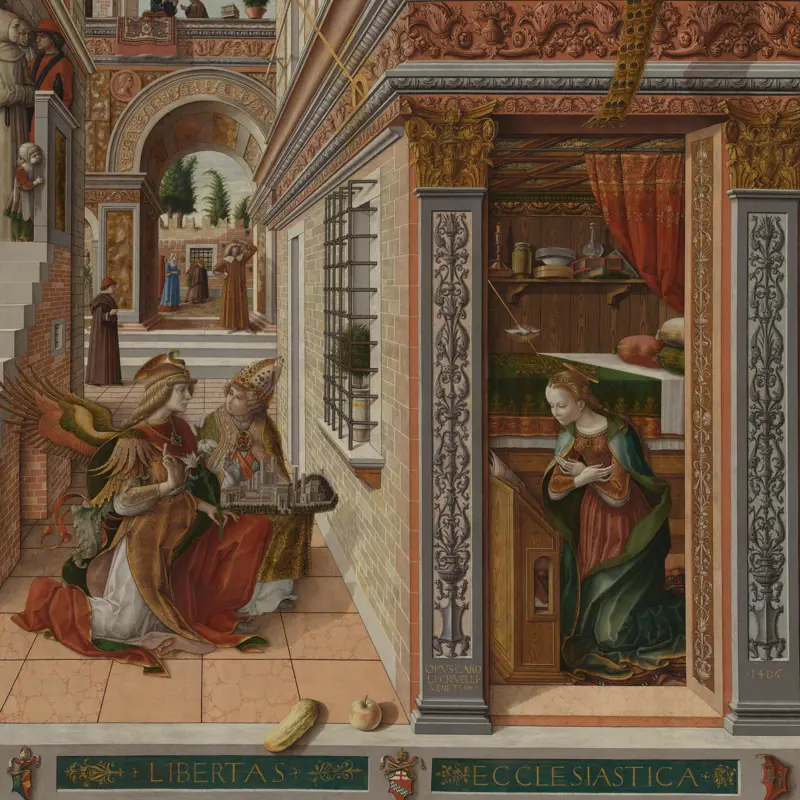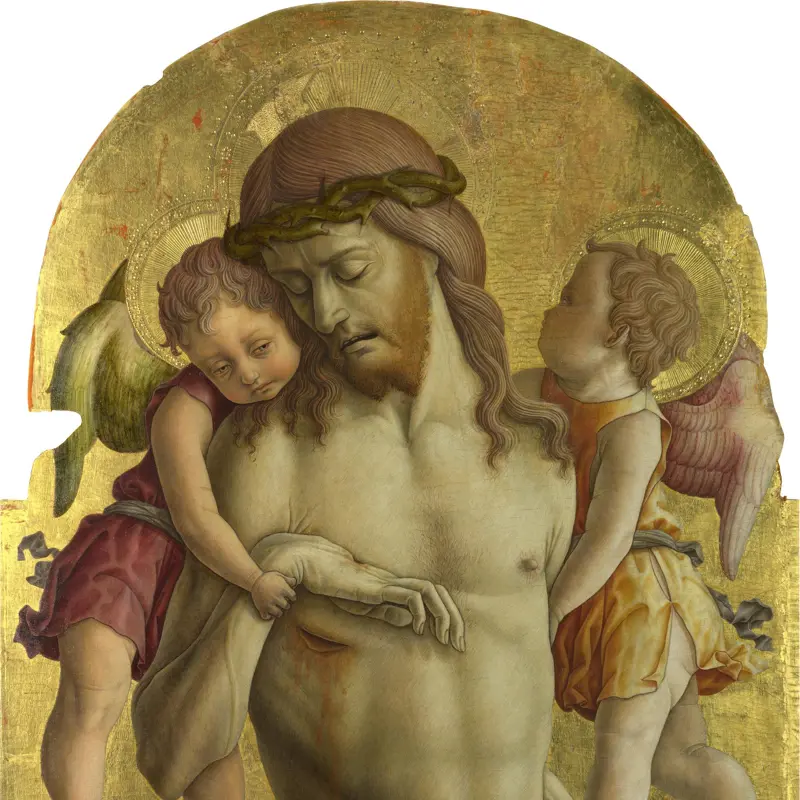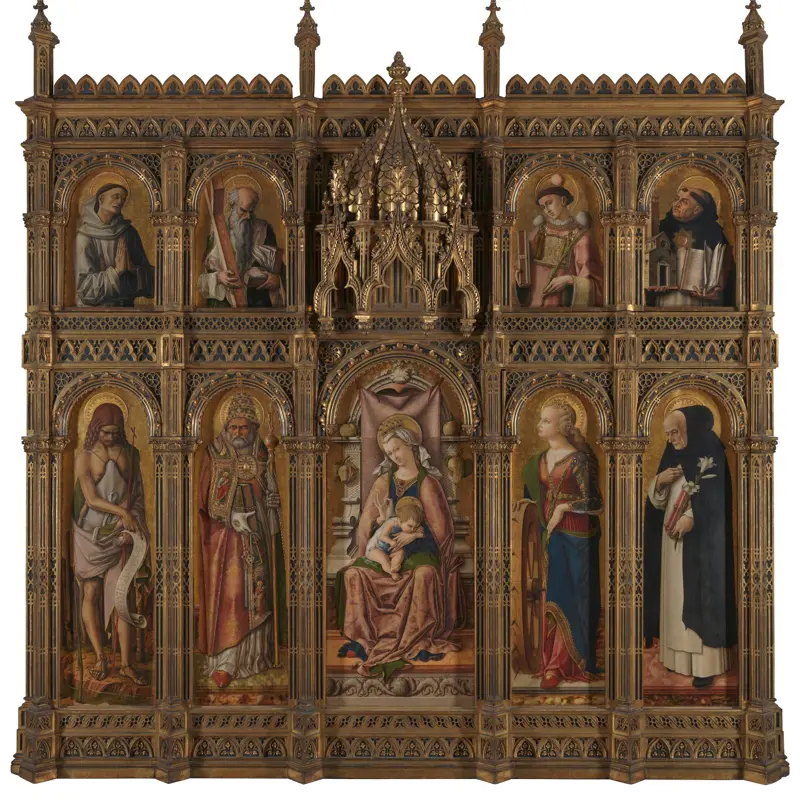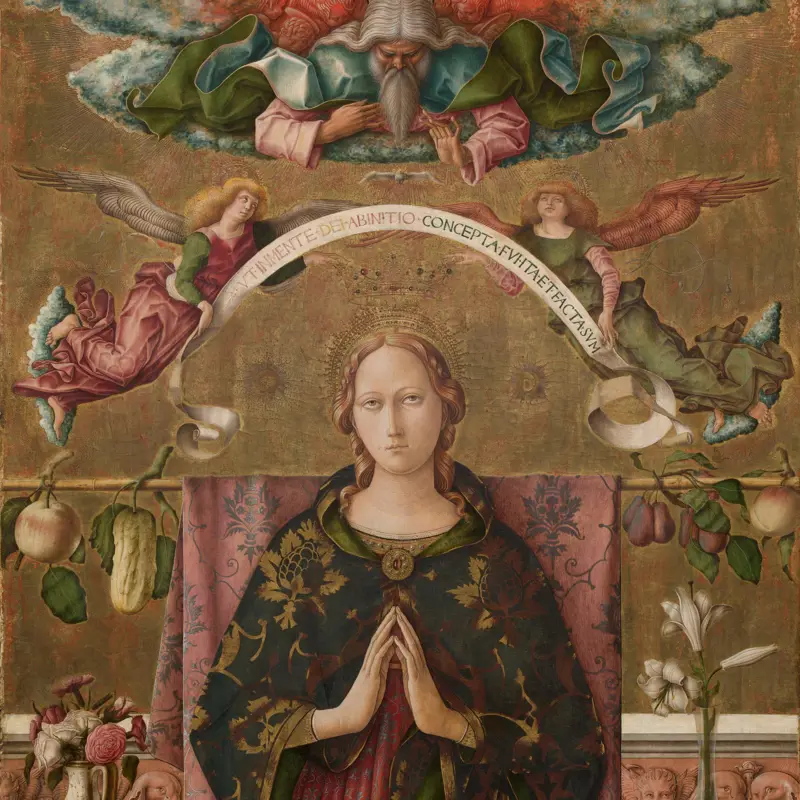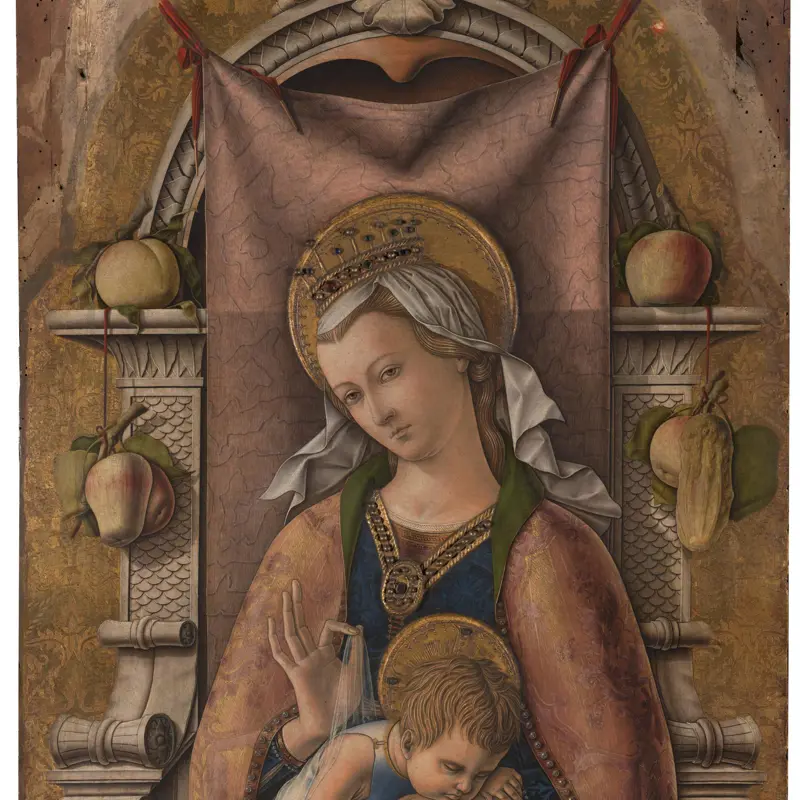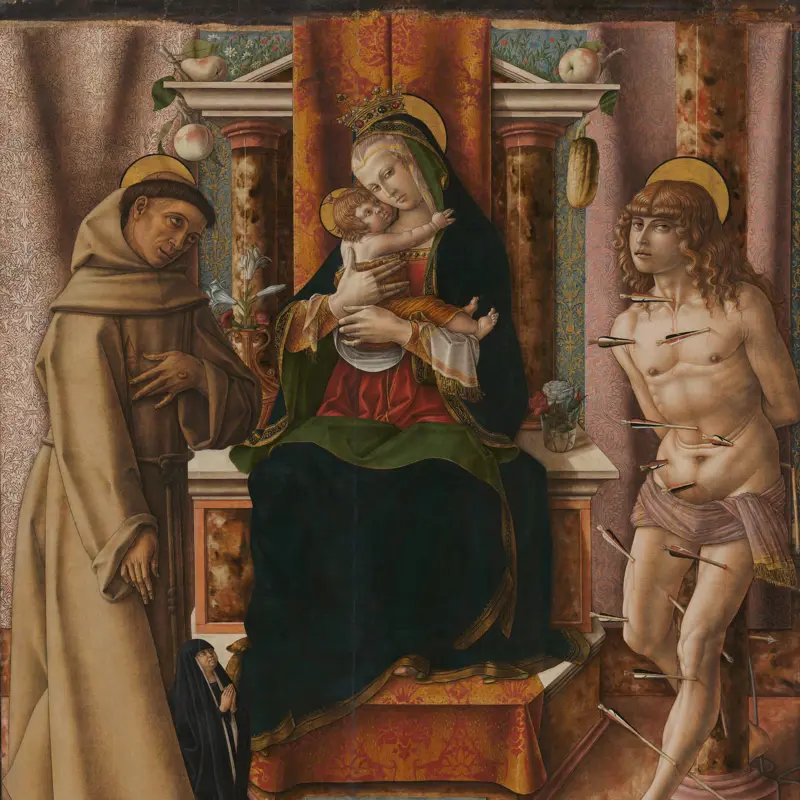Carlo Crivelli, 'Predella of La Madonna della Rondine', after 1490
About the work
Overview
This predella (literally ‘platform’ or ’step‘, the bottom tier of an altarpiece) comes from a large altarpiece that Crivelli painted for the Ottoni family chapel in the Franciscan church at Matelica, in the Italian Marches.
The scenes reflect the patrons’ different interests – one was a churchman, the other a soldier – and tell us more about the holy figures above. Saints Catherine and Jerome on the left represent theological learning, while Saints George and Sebastian on the right were soldiers.
In the centre, the holy family shelter in a ruined building, symbolising the old law that Christ replaced. Through the arch to the right shepherds gaze up in amazement at the choir of angels announcing Christ’s birth, while their dog sleeps on oblivious to the miracle above.
Key facts
Details
- Full title
- Predella of La Madonna della Rondine (The Madonna of the Swallow)
- Artist
- Carlo Crivelli
- Artist dates
- about 1430/5 - about 1494
- Part of the group
- Altarpiece from S. Francesco dei Zoccolanti, Matelica
- Date made
- after 1490
- Medium and support
- egg tempera with some oil on wood
- Dimensions
- 29.2 × 145.5 cm
- Inscription summary
- Signed
- Acquisition credit
- Bought, 1862
- Inventory number
- NG724.2
- Location
- Room 10
- Collection
- Main Collection
- Frame
- 15th-century Italian Frame with Later Interventions (original frame)
Provenance
Additional information
For further information, see Alistair Smith et al., ‘An Altarpiece and its Frame: Carlo Crivelli's ‘Madonna della Rondine’’ in ‘National Gallery Technical Bulletin’, Vol.13, 1989; for further information see the Technical Bulletin.
Exhibition history
-
2011Devotion by Design: Italian Altarpieces before 1500The National Gallery (London)6 July 2011 - 2 October 2011
-
2023Paula Rego: Crivelli's GardenThe National Gallery (London)20 July 2023 - 29 October 2023
Bibliography
-
1951Davies, Martin, National Gallery Catalogues: The Earlier Italian Schools, London 1951
-
1986Davies, Martin, National Gallery Catalogues: The Earlier Italian Schools, revised edn, London 1986
-
2001
C. Baker and T. Henry, The National Gallery: Complete Illustrated Catalogue, London 2001
About this record
If you know more about this work or have spotted an error, please contact us. Please note that exhibition histories are listed from 2009 onwards. Bibliographies may not be complete; more comprehensive information is available in the National Gallery Library.
Images
About the group: Altarpiece from S. Francesco dei Zoccolanti, Matelica
Overview
This large altarpiece was painted by Carlo Crivelli in 1491 for a family chapel in the Franciscan church in Matelica, a small town in the Italian Marches. The Ottoni were the local ruling family – you can see their coat of arms placed conspicuously on the bottom edge of the main panel.
The location heavily influenced the altarpiece’s design. The Ottoni chapel was tall and needed a tall altarpiece: including the frame and predella (the bottom tier) the painting is approximately 2.5 metres high. There was a large window on the back wall of the chapel – which was unusual – so the altar and altarpiece had to be on the side walls. This painting was on the left wall; the light in it comes from the upper right, mimicking the actual light in the chapel.


